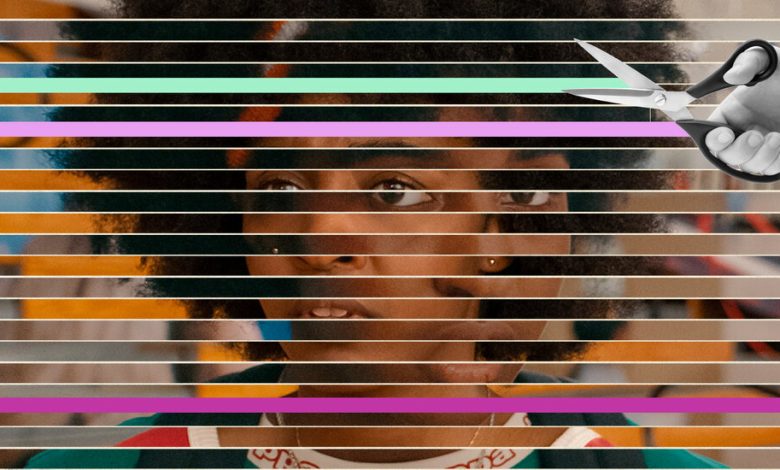Why Do Fan-Made Trailers Rule the Internet?

By day, Emily McLaughlin pours pumpkin spice lattes as a Starbucks barista. By night, she roams the internet as a self-described “fictional gay-people enthusiast,” tirelessly posting about and promoting her favorite queer movies and television shows.
So it was inevitable that “Bottoms,” a bawdy comedy about lesbian high school outcasts who start a fight club, would become her newest obsession. When the film migrated to streaming platforms on Sept. 22, she immediately went to work sequencing clips to create a 35-second montage of moments between one of the film’s protagonists, Josie, and her cheerleader crush, Isabel, soundtracked to the winking come-ons of the singer Gwen Stefani.
These types of short videos — in which scenes from films and television shows are remixed by avid viewers and set to music — are known as fan edits or, simply, edits. In recent years, they have become a staple of online fandom, giving watchers an outlet to champion their beloved films, shows and celebrities.
The videos essentially function as unofficial trailers (and free advertising), often going viral. Some zoom in on specific personalities, observing aspects of a character that may go overlooked. Others, known as thirst edits, simply applaud characters — and the actors who play them — for their sex appeal.
“It’s a very personal kind of expressivity, a meditation on character where the music and the editing is meant to share the filmmakers’ — and they are filmmakers — readings,” said Francesca Coppa, a fandom scholar who teaches English and film studies at Muhlenberg College. “And then other people buy into those readings, like, Yes, I totally see that.”
Ms. McLaughlin says that editing helps her process what she’s consuming. “It’s kind of like when you have a thought and it isn’t fully realized until you say it out loud,” she said. She has since posted six more “Bottoms” edits — some rooting for other on-screen couples, others emphasizing the goofy charm of the main characters, all garnering thousands of views — soundtracking them to pop anthems by artists like Olivia Rodrigo and Rina Sawayama.
“These days, things die really quickly, so posting edits is a way to keep the excitement up,” she said.
The earliest known example of an edit can be traced to 1975, when a fan named Kandy Fong created a slide show of outtakes from the series “Star Trek.” She staged live performances during which she shuffled through the stills of the show and played a recording of her and her friends singing a parody folk song called “What Do You Do With a Drunken Vulcan?”
As technology has advanced, edits have become easier to put together and distribute. Their entrance into the mainstream has been facilitated by social media, particularly TikTok, where niche content can spread widely outside of its original context.
“If there’s an underrated TV show and someone wants to convince people to watch it, they would make an edit of it,” said Haya Ahmed, an 18-year-old fan editor. Frustrated that Apple TV+ appeared to market only “Ted Lasso,” she said, she and her friends started publicizing edits of seemingly less popular series on the platform like “Trying” and “Silo.”
That visibility extends to characters, too. Consider Kendall Roy in the HBO drama “Succession.” Kendall, the pompous second son of a conservative media tycoon, has become a favorite among many young women who see him as similar to a teenage girl.
Megan Williams, a 24-year-old creative writing student, started watching “Succession” after seeing Kendall edits soundtracked to female artists like Mitski. “Kendall has a sadness about him that you only see in Mitski songs,” said Ms. Williams, who now runs a popular account dedicated to the show on X, formerly known as Twitter.
She pointed to one widely known Kendall edit set to Mitski’s “Thursday Girl,” which emphasizes the helplessness he feels after swerving a car into a river in the show’s Season 1 finale. (Mitski once said that the edit was “the best thing that’s happened” to her on the internet.)
Edits can also be a fun way for many people to contribute their own theories about their favorite show’s story lines. Queer fans, for example, may pick up on romantic chemistry between two same-sex characters who are ostensibly straight.
Alex Hinnant, a social media manager, made one of the first popular edits of the FX series “The Bear” out of moments from the show’s trailer. He selected a ’90s hip-hop song, Digable Planets’ “Where I’m From,” to nod to the Black history of Chicago, where “The Bear” is set. “There’s an energy to the show where it’s being carried by the people of color,” Mr. Hinnant, 26, said. “So in my edit, I want to make sure there’s a song that represents that.”
These edits become so popular that they even bleed into a show’s official marketing. R.E.M. released an edit of “The Bear” as a music video, after its 1994 song “Strange Currencies” was featured in the show’s second season.
Fan-made trailers can be just as effective as branded ones. “Sometimes I see an edit on my timeline,” Mr. Hinnant said, “and I’m like, You need to like actually work for Lionsgate or something.”




